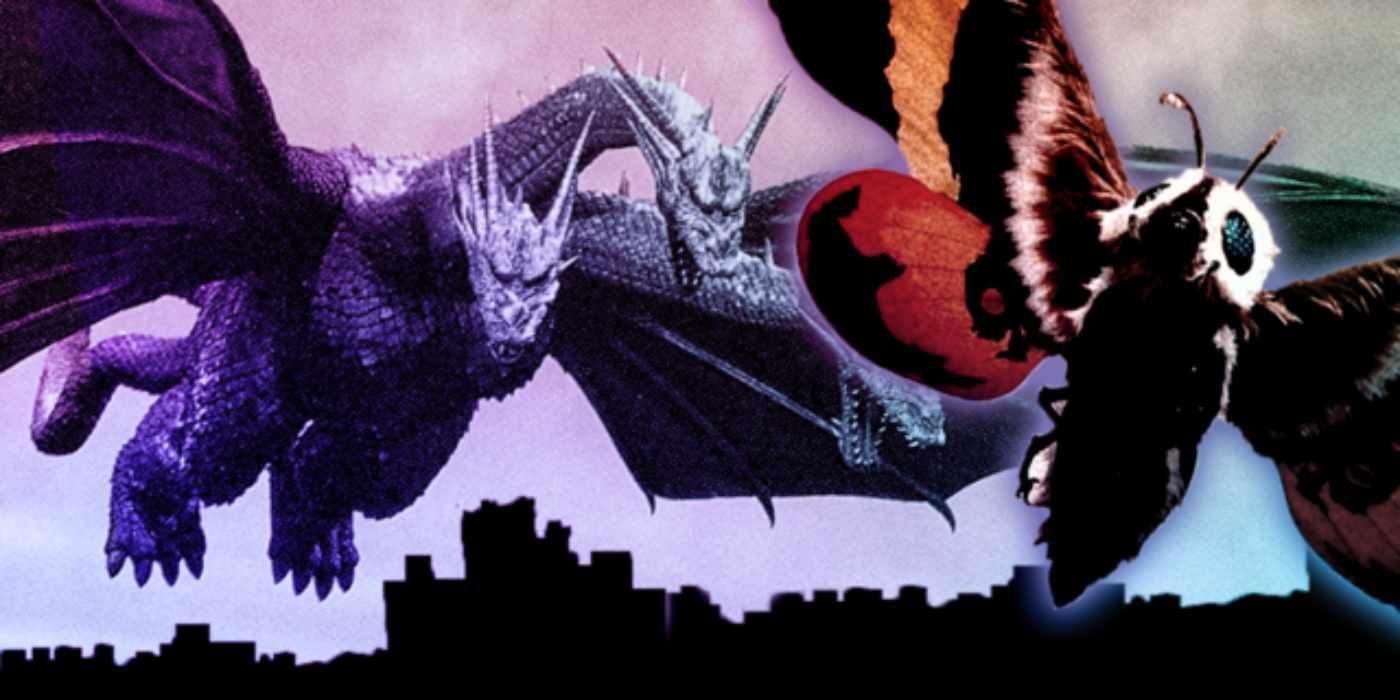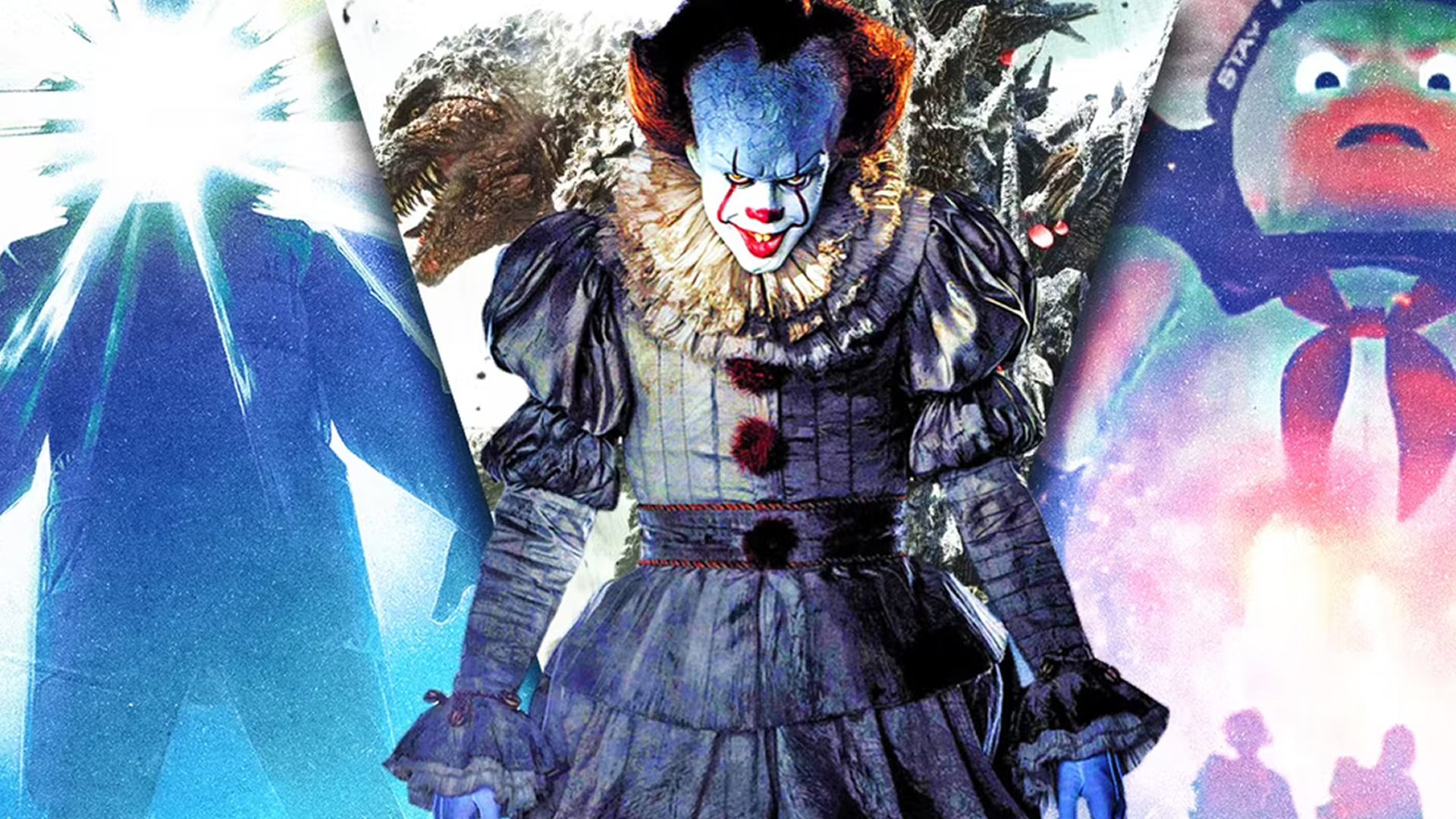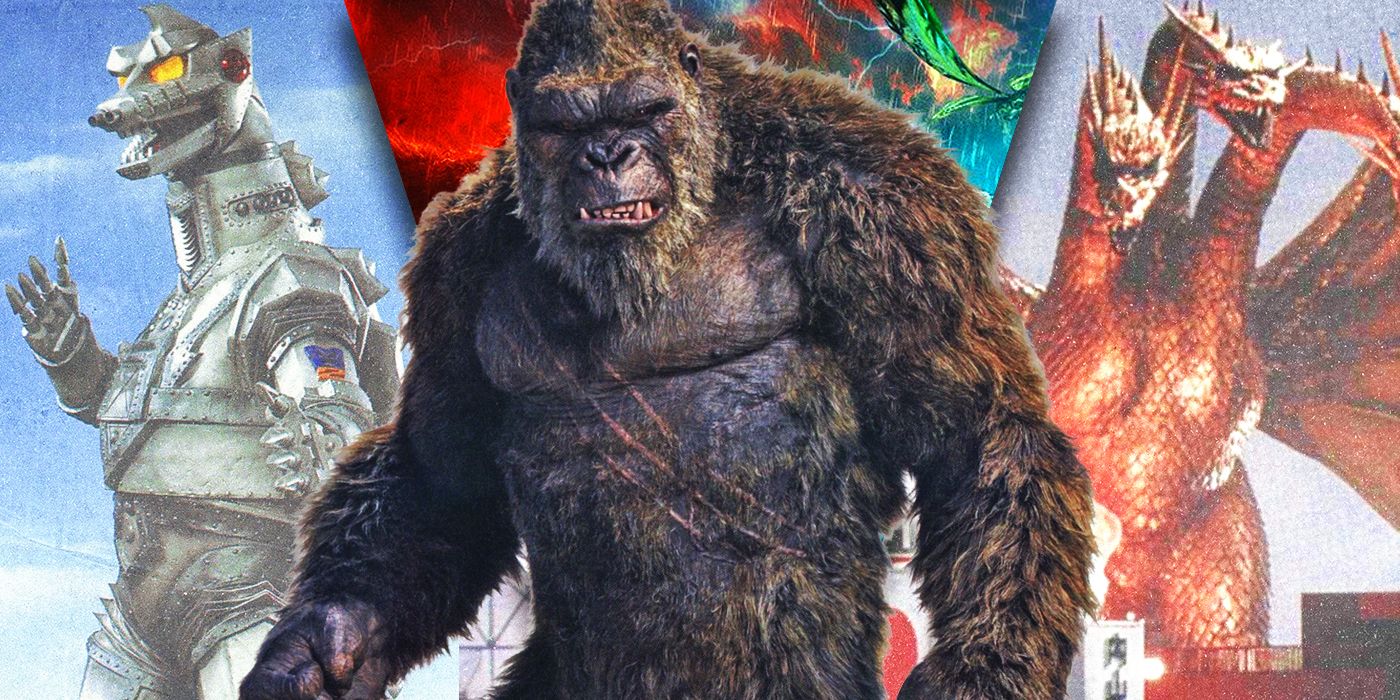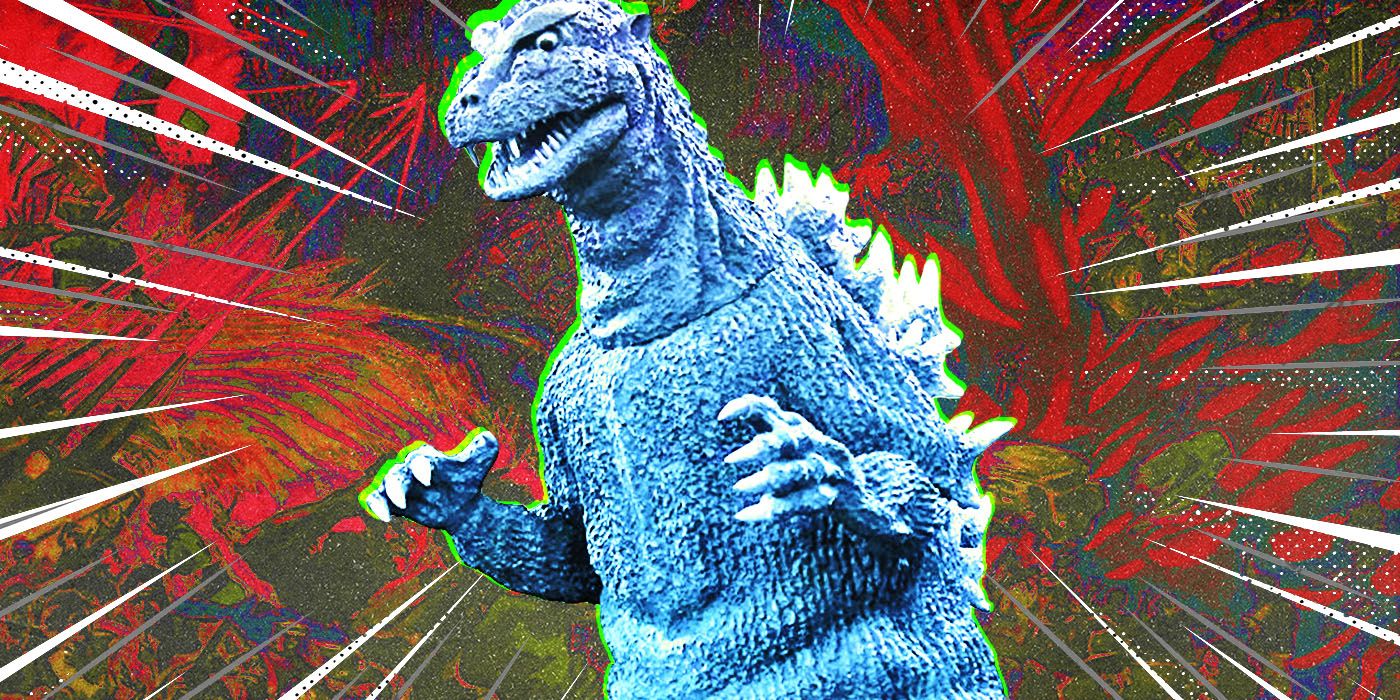Quick Links
Summary
- Godzilla has left a lasting impact on the world since he first appeared in 1954.
- No matter the version, Godzilla's origin has always been a point of interest.
- Because of the mystery surrounding Godzilla, the source of his power and growth has many potential truths.
Spanning over 70 years and spread across more than 32 films, the "monster" known as Godzilla a worldwide icon. Based on a monster awakened from the devastating aftermath of a nuclear attack, the franchise birthed a genre that holds supremacy in pop culture even today. The lizard-like monster, which looks more like a creature from the Cretaceous period, piqued the audience's interest in the inspiration and facts behind the elaborate Godzilla universe.
Since its inception in the 1950s in Japan, there have been several takes on the monster with different origin stories to fit the narrative. The "Americanization" of the famed reptilian monster brought forth different angles about the nature of this monstrous creature and what could've kickstarted its wrath on humanity. Godzilla's history is rich, and so is its evolution into a radioactive breathing destructive force, but is there any truth to the creature's existence? Is Godzilla a manifestation of a popular myth or simply a product of active imagination?
Updated on May 2, 2024, by Ajay Aravind: Godzilla remains as memorable today as he did in 1954. This lovably terrifying monster has most recently appeared in Godzilla x Kong: The New Empire, not long after his minor television role in Monarch: Legacy of Monsters. With such a widespread franchise including movies, TV shows, video games, and comic books, fans have often wondered about Godzilla's origins. As such, we've updated this article with some more relevant information.
Where Did the Lore for the Iconic Monster Originate?
Godzilla May Be Folklore Or Japan's Reaction To The Hydrogen Bomb
|
Godzilla Franchise Trivia |
Originally created by Ishiro Honda, Tomoyuki Tanaka, and Eiji Tsuburaya |
|---|---|
|
There are 38 official Godzilla films as of May 2024 |
|
|
Godzilla was named a tourism ambassador for Shinjuku, Tokyo |
|
|
There have been numerous crossovers, notably with King Kong |
|
|
Godzilla has metaphorical ties to the nuclear attacks on Hiroshima & Nagasaki |

The Top 24 Godzilla Monsters, Ranked from Weakest to Strongest
Godzilla and his fellow monsters are among the most iconic creatures in the kaiju genre, but not every creature can stand up to the king of monsters.Directed by Ishiro Honda, the 1954 cinematic appearance of Godzilla started what is famously known as the Showa Era. Godzilla's Japanese name is Gojira, and it has also been referenced several times in the American version of the monster. The Japanese word is an interesting combination of two syllables, "gorira" which is an approximation of "gorilla," and "kujira" which is a Japanese word for whale. The name's origin makes sense, since Godzilla is a more or less reptilian creature that can live both underwater and on the surface.
The origin of the first generation Godzilla in the Showa Era proposes that the famed creature was a type of prehistoric reptilian species that lived in the depths of the ocean, undisturbed, feeding off marine organisms to sustain its existence. However, its deep slumber was interrupted by America's hydrogen test bombings at Bikini Atoll in the Pacific Ocean, which exposed Godzilla to huge amounts of radiation. It caused the creature to mutate into a giant monster with a dinosaur-like appearance that could walk on its feet like a human.
From the movie's perspective, it's easier to conclude that Godzilla's inception is more like the "fear" experienced by the Japanese people in relation to the Hiroshima and Nagasaki bombings. The radiation released during the attack temporarily condemned the land to an apocalyptic wasteland, and Godzilla's existence is reminiscent of nuclear radiation's effects on living things. Its radioactive footprint is the clue that the Japanese needed to confirm their suspicion.
However, in the same movie, Kyohei Yamane, the person sent to investigate the strange events on Odo Island, learned through the natives that Odo folklore speaks of a creature like Godzilla that would one day rise from the sea and destroy everything. Whether a Japanese folktale inspired the pop culture icon is unclear, but it seems that Godzilla's conception is concentrated more on Japan's anxiety about nuclear attacks. The movie directly puts the titular monster as a nuclear by-product and an abomination that represents the horrors of war and destruction.
Is Godzilla Based on a True Story?
Depending On The Era, Godzilla Has Been Viewed As Both Hero & Villain

10 Movie Monsters That Could Defeat Godzilla (And 10 That Don’t Stand a Chance)
He might be considered the king of the monsters, but there are plenty of other movie beasts that could dethrone Godzilla and steal the crown.As far-fetched as it may sound, Godzilla is somewhat based on a real-life event. Of course, it is not the monster itself but the idea that gives birth to the concept of radiation-infested creatures wreaking havoc due to human ignorance. There was an actual event that inspired the 1954 movie and became the basis of Godzilla's existence. During the U.S.'s experiments with the first Hydrogen Bomb explosion in the Pacific, a Japanese fisherman's boat was caught in the explosion despite prior warnings of clearing the area.
The entire crew was exposed and suffered from radiation sickness, although 22 of the 23 men onboard recovered. Known as the Lucky Dragon 5 incident, the destruction of ships by Godzilla might possibly be a reference to this event. The Japanese people's sentiments and worries over radiation poisoning perfectly resonated throughout the Showa Era releases. Despite the majority of the movies being in continuity from 1954 up to 1975, several changes have been made to Godzilla's origin story to make the franchise more palatable.
The Heisei Era Gave Godzilla's Origin Story a Bizarre Twist
Heisei Era Godzilla Evolved As A Result Of Hydrogen Bomb Testing
|
Notable Heisei Era Movies |
IMDb Score |
Tomatometer |
|---|---|---|
|
Godzilla vs. Destoroyah (1995) |
6.9 |
100% |
|
Godzilla vs. Biollante (1989) |
6.5 |
71% |
|
Godzilla vs. King Ghidorah (1991) |
6.4 |
56% |

10 Monsters Godzilla Has Fought the Most, Ranked
Times change, but some enemies remain the same. Here are some Godzilla rivals who have gone up against the King of the Monsters more than once.After the unprecedented success of the Godzilla movies up until the '70s, Toho decided to reboot the beloved franchise and give the iconic monster a darker twist. As a result, it received a rather outlandish origin story in the franchise's attempt to revive Godzilla as an anti-hero rather than the defender it had been during the Showa Era. The 1991 Godzilla vs. King Ghidorah dives deeper into the creature's birth by elaborating more on the entire incident. The movie follows the events of a group of Japanese soldiers who were saved from the U.S. military by a dinosaur-like creature resembling Godzilla. However, the real twist is that this event took place in 1944, and the creature the soldiers witnessed is the same Godzilla that came to be after the 1954 bomb test.
It was implied in the original 1954 movie that Godzilla was a prehistoric reptile who was awakened and then mutated because of the hydrogen bomb testing. Since the Heisei Era movies are a continuation of the original, they slightly tweaked the creature's origin and included time-traveling aliens. In Godzilla vs. King Ghidorah, these "aliens" are actually members of the human race called Futurians from the year 2204. Furthermore, it's a world where Godzilla has completely obliterated Japan. To stop his destruction, the Futurians suggest removing Godzilla from Lagos Island before its destruction, thereby preventing its mutation.
They succeed, and instead of Godzilla, they leave three other creatures on the island, which later mutate into King Ghidorah. However, present-day humans realize that Godzilla's existence is essential for tackling other "kaiju," and so they devise a plan to bombard it with high levels of radiation to kickstart the changes. Later, they discover that the dinosaur had already mutated after coming across a contaminated sunken Russian sub. Since the creature received a second dose of radiation, it went into a mega-evolution. Thus, instead of being a by-product of irresponsible nuclear testing, Godzilla is born from humanity's indifference to destroying nature by dumping toxic waste on land and in the ocean.
The Modern-Day Godzilla is a Force of Nature
Two New Eras Have Emerged In The Godzilla Franchise Over The Last 25 Years

